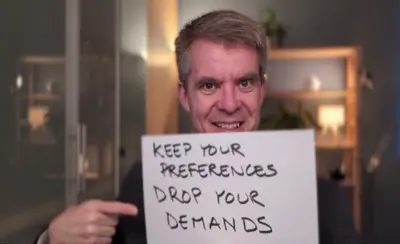Why My Brain Lied to Me About Fixing My Problems (and Why a Pen Finally Shut It Up)

In the fast-paced world of tech, we’re trained to believe our sophisticated brains can debug any problem—including emotional ones. Yet even as someone who teaches cognitive behavioural techniques to tech professionals daily, I recently caught myself stuck in the classic “I can think my way out of this” trap.
The Ultimate Debugging Failure
Last Wednesday, I convinced myself I could solve my emotional meltdown through sheer brainpower.
I sat in the NHS GP where I’m doing a placement, staring at the wall, mentally rehearsing all the reasons I shouldn’t feel like rubbish for running 13 minutes over with my last client of the day.
Two hours later, I was still circling the same drain of thoughts, getting nowhere—just with more anxiety sweat stains.
Sound familiar?
The Memory Leak in Your Mental Processing
We tech-minded folks fancy ourselves master thinkers. “I’ve got this sophisticated brain,” we tell ourselves. “Surely I can untangle my own emotional knots just by concentrating really hard.”
Except we can’t. It’s akin to trying to debug a complex application entirely in your head without tools, logs, or documentation.
And I know this better than anyone because I literally teach this to my clients every day.
“Write it down,” I tell them. “Your brain is lying to you.”
That didn’t stop me from falling face-first into the same mental quicksand myself.
The Legacy Code Review I Wasn’t Expecting
“I ran over time with my last client and felt like absolute crap for the rest of the evening,” I confessed to my friend Derek at lunch.
Derek’s a TEAM-CBT therapist with a voice so calming it’s like getting a hug.
We were sitting in this trendy Indian under a railway arch near Battersea Power Station, the kind with exposed brick walls where they serve you naan in copper bowls and charge £14 for it.
Derek took one bite of his black daal, looked at me and asked, “Have you written your thoughts down?”
Oh.
Oh.
I felt like I’d been caught teaching network security while actively leaving all my passwords set to “password123”.
The Exception Handling My Brain Attempted
When Derek called me out, my brain immediately offered up these gems:
- “I understand cognitive distortions—I should be able to fix them in my head.”
- “Writing takes too long—surely there’s a mental shortcut!”
- “After 30 years of training with and using these ideas, I shouldn’t need to write things down like a beginner.”
- “Can’t someone just say something brilliant that makes me feel better without me doing any work?”
These are literally the exact excuses my tech clients give me. Every. Single. Week.
Implementing the Fix That Actually Works
Back home, I grabbed a proper pen (not one of those hotel biros that barely works) and an actual piece of paper (not the back of a bank statement).
I wrote down:
- The specific situation that upset me
- The exact feelings it triggered (properly named: disappointment, shame, frustration)
- The thoughts causing those feelings
- The distortions in those thoughts
- More balanced perspectives
Within 12 minutes (I timed it), the emotional storm had calmed from Category 5 to a manageable drizzle. I still wasn’t delighted about my poor time management, but I no longer felt like I should give up on CBT coaching and spend my life walking the SW Coastal Path with nothing but a rucksack and an excessive supply of digestive biscuits.
Why the Writing Things Down Solution Outperforms Mental Processing
When we write rather than just think, we force our brains to:
- Turn vague mental impressions into actual words (harder than it sounds, like trying to document legacy code that’s never been documented)
- Stick with one thought long enough to examine it (rather than mental pinballing between different issues)
- Create something we can look at objectively (it’s harder to argue with what’s on the page—like having a proper stack trace instead of guessing what went wrong)
In our world of instant everything, where we’re trained to solve complex problems quickly and efficiently, the most radical act might be slowing down to write out our thoughts, especially when we least feel like it.
Your 5-Minute “Stop Lying to Yourself” Exercise
The next time you’re emotionally spinning out over a system crash, a missed deadline, or an uncomfortable client interaction:
- Set a timer for 5 minutes (yes, actually set it—don’t just think about setting it)
- Write down exactly what happened (specifics only, please—like a good bug report)
- Name your feelings using actual emotion words (not just “stressed” or “overwhelmed”)
- List the thoughts making you feel that way
- Challenge each thought with something more accurate
Then notice how different you feel. Not elated, perhaps, but clearer. Like your cognitive RAM has suddenly freed up and your mental processes can function again.
Have you tried this and been shocked at how well it works? Or are you a stubborn non-writer like I was? I’d love to hear what happens when you finally do the thing you’ve been telling everyone else to do.
The next time you face an emotional system crash, try rebooting with pen and paper. I’d love to hear what happens when you implement this simple fix. (And before you ask—yes, I practice what I preach. The first draft of this was handwritten in my trusty Pukka Pad.)


